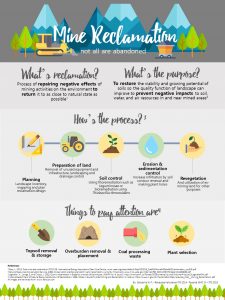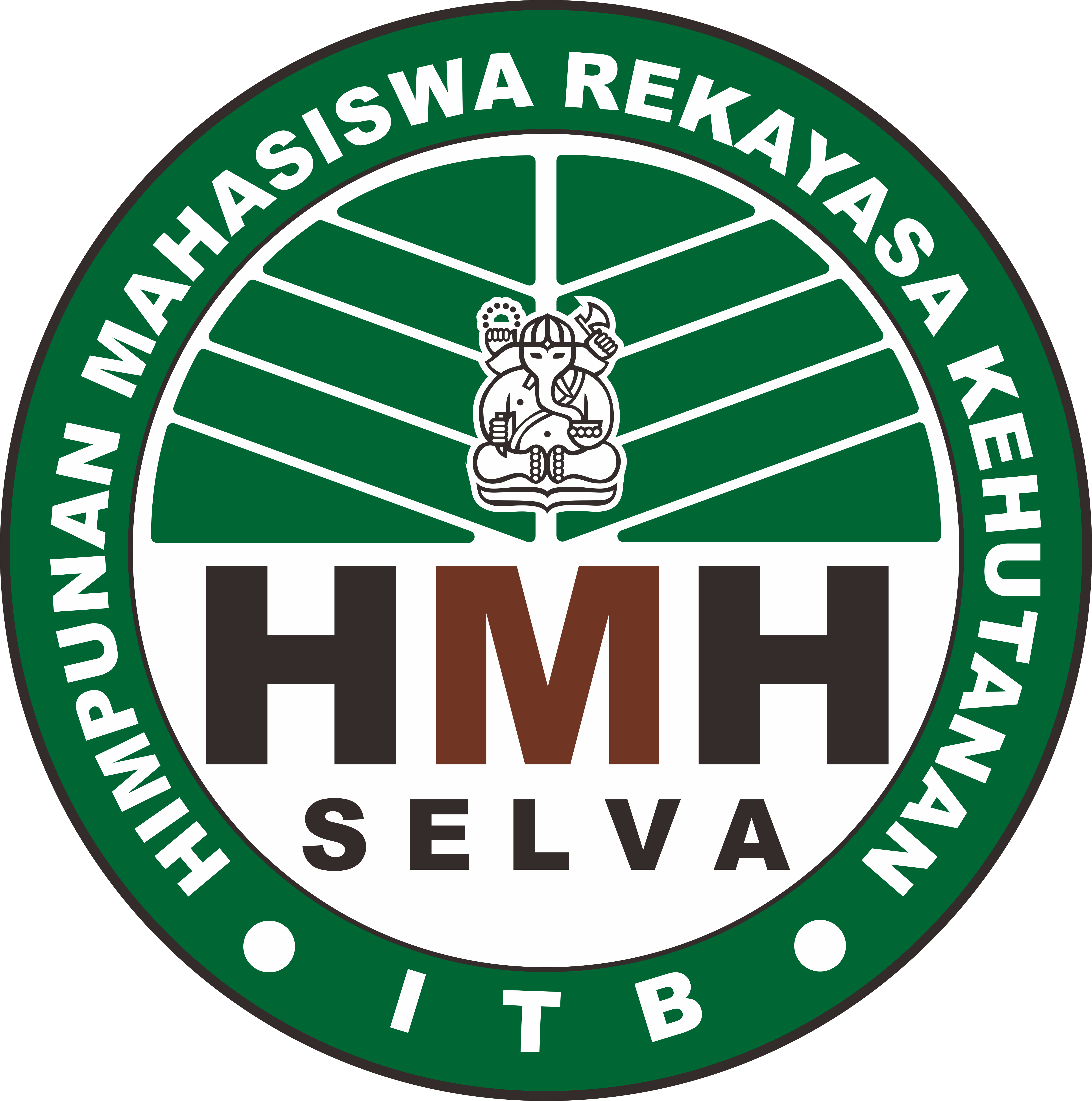
Oleh: Salsabila Nur Feranti (11514031)
Reclamation is process of repairing any negative effects of mining activities on the environment in an effort to return it to as close to natural state as possible or redesign landforms to improve the use of an area for human1. The purpose of reclamation is to restore the viability and growing potential of soils so the quality function of landscape can improve to prevent negative impacts to soil, water, and air resources in and near mined areas2. The process of reclamation includes:
- Planning, consist of landscape inventory, mapping, and plan reclamation design.
- Implementing, consist of:
- Preparation of land includes removal of unused equipment and infrastructure, landscaping and drainage control, also soil control using fitoremediation such as Leguminosae (Nitrogen-binder) or bioremediation using Thiobacillus ferrooksida.
- Erosion and sedimentation control consist of increase infiltration by soil contour renewal and making plant holes.
- Top soil management, because topsoil is a very important factor in any reclamation schemes to establish the success of vegetation,
- Revegetation (process of replanting the soil of disturbed land can be by natural process by succession) and utilization of ex-mining land for other purposes.
There are things to pay attention of mine reclamations4, which is:
1. Topsoil removal and storage
Before mining, topsoil depth must be determined to ensure proper replacement depth for growing crops.
2. Overburden removal and placement
Overburden can contain layers with pyrite so it can produce sulfuric acid when exposed to air and water. To assure a suitable root medium, subsoil layers are placed on top of the graded rocky overburden during reclamation.
3. Coal processing waste
The waste from coal cleaning process can be acid-forming and unable to support plant life. The material must be treated with noncombustible and nontoxic earthen material to neutralize and prevent production of acid water.
4. Plant selection
The plant used for reclamation must be the same as before to establish biodiversity. It is very important to do plant inventory before open the site.
So, what can we do as forestry engineering student? We must ensure the design process of reclamation will return the site to natural state as possible. Remember to use native species as an attempt to establish biodiversity of the site.
References:
- Sloss, L. 2013. Coal mine site reclamation CCC/216. International Energy Association Clean Coal Centre, www.usea.org/sites/default/files/022013_Coal%20mine%20site%20 reclamation_ccc216.pdf
- Natural Resources Conservation Service. 2006. Conservation practice standard—Land reclamation, currently mined land, www. nrcs.usda.gov/Internet/FSE_DOCUMENTS/stelprdb1253605.pdf
- Legwaila I. A., Lange, E. and Cripps. J. 2015. Quarry reclamation in England: a review of techniques. JASMR Vol. 4, Issue 2. http://www.asmr.us/Portals/0/Documents/Journal/Volume-4-Issue-2/Legwaila-BW.pdf
- Indiana Department of Natural Resources Division of Reclamation. 2002. Citizen’s Guide to Coal Mining and Reclamation in Indiana. https://www.in.gov/dnr/reclamation/files/re-Guide_Coal__Mining_Reclamation.pdf

You completed several good points there. I did a search on the subject matter and found mainly people will consent with your blog.